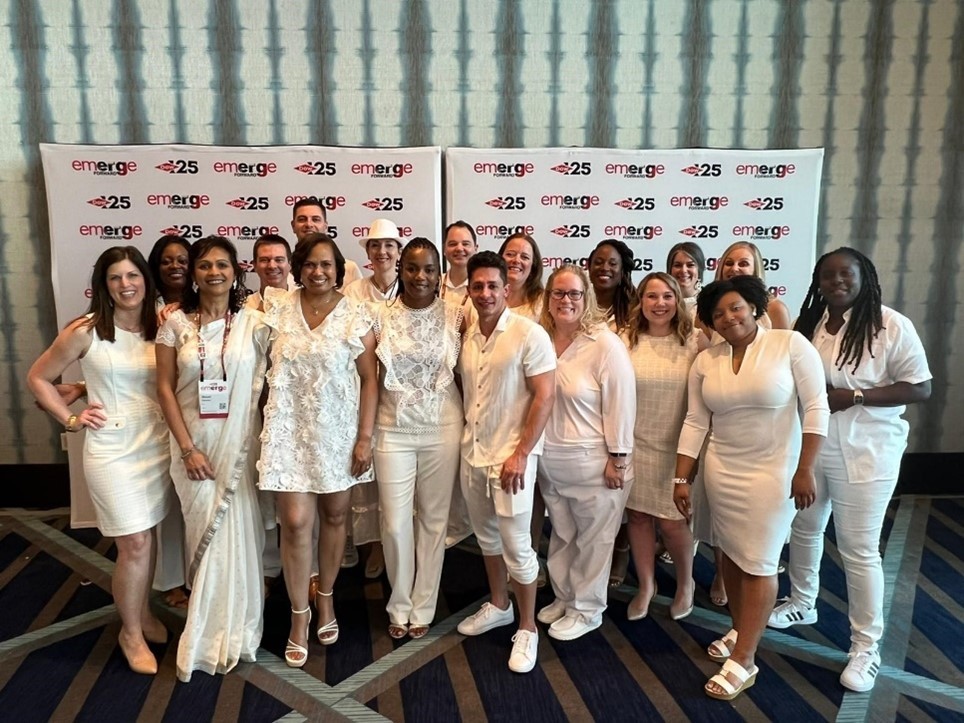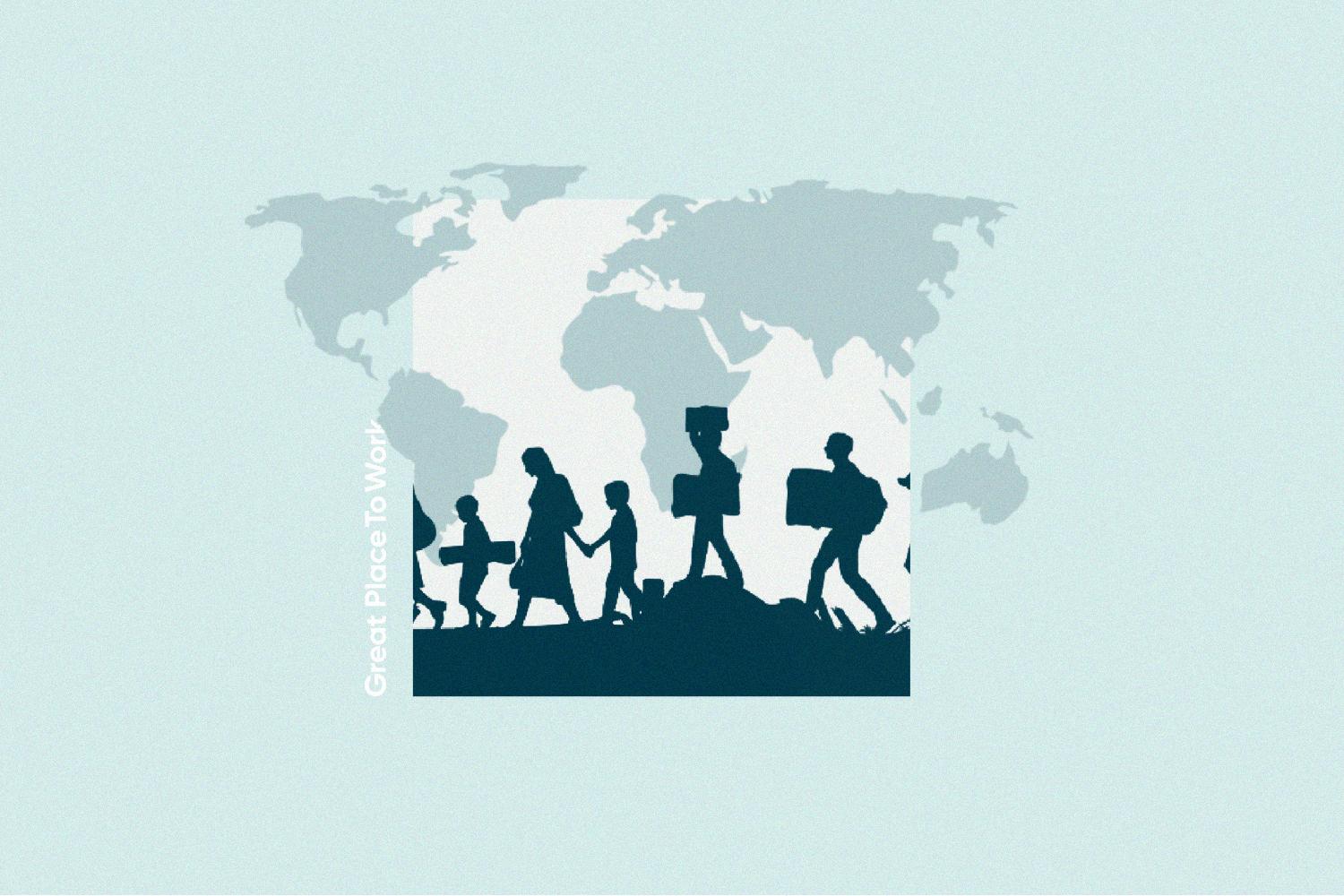Belonging, DEIB, Employee Experience, ERGs
Navy Federal Credit Union shares lessons learned from its efforts to create a culture that welcomes and includes employees with disabilities.
Employee resource groups (ERGs) can be effective tools for building a more inclusive workplace.
They are unmatched listening channels and serve as crucial catalysts for transformation and change inside the best workplaces. Great Place To Work® research on ERGs has found that ERG members are 40% more likely to feel good about their company’s impact on the community and 30% more likely to have confidence in their executive team.
Some great workplaces are using ERGs to improve the experience of employees with disabilities, a demographic that is often overlooked and underappreciated.
At Navy Federal Credit Union, its “Diverse Abilities Network” is the second ERG to be launched at the company. The group is designed to support employees with both visible and invisible disabilities, with membership open to caretakers and allies, as well.
Launched in May 2023, the group’s success is measured against three strategic pillars: education, career development, and belonging.
“Meetings — which happen on a monthly basis — have some sort of component to tie to one of these strategic pillars,” says Athena Villarreal, manager, diversity, inclusion and belonging & corporate social responsibility strategy and optimization at Navy Federal Credit Union.
Activities include “Accessibility Corner,” where the team shares tips and tricks to improve the experience, such as how to turn on closed captioning or turn off distracting notifications. The group also launched a cross-functional project to develop new best practices to support neurodivergent employees.
“[ERG members] are helping to provide perspective and feedback in real time, says Villarreal. One example is a new benefit the company offers called Joshin, which supports neurodivergent employees and offers coaching for managers on how to work with different learning and communication styles.
The group also has the opportunity to volunteer or support causes that matter to them and support external partner groups like Best Buddies.
Learn more about industry-leading ERG strategies at the For All Summit April 8-10 in Las Vegas!
Responding to employee needs
Would your company benefit from having a resource group for employees with disabilities? For Navy Federal Credit Union, the group was started as a direct response to requests from employees at the company.
“Our employees were asking for a space where they can get together and talk about things,” says Villarreal. When the company offered events or celebrated observances on the topic of disabilities, they saw impressive engagement rates.
With this input, Navy Federal Credit Union launched the ERG and within 48 hours, it had more than 400 participating members. Today, more than 1,100 employees at the company belong to the ERG.
Apart from membership, Villarreal and team measure engagement to understand how their efforts are landing with employees. Digital communications channels like chat offer metrics, and the team measures readership on content pieces and educational resources shared on the company intranet.
Collaborating across resource groups
When employee resource groups collaborate, the results can be profound.
Navy Federal Credit Union’s other resource group, focused on the military community, found common cause to have a discussion around PTSD awareness in June 2024.
“A leader from each of the ERGs provided their own experience and they shared their own stories to the group, which was received really with open arms,” Villarreal says. By joining together, the groups were able to expand the conversation and offer powerful evidence of shared values and experiences employees have, regardless of past life experience.
Lessons learned
For other companies thinking about launching an employee resource group to support employees with disabilities, Villarreal offered six tips:
1. Be sure to connect with crucial HR and operations partners
"Make sure to connect with key partners like employee relations, medical accommodations, employee benefits, and wellness teams," Villarreal says. "This makes the effort a collective action and allows the team to route questions to people with the power to make change."
2. Prioritize privacy and safety
“There is a specific privacy aspect to this type of ERG,” Villarreal says. She advises setting clear guardrails around confidentiality and how information shared in ERG meetings will or won’t be disseminated. At Navy Federal Credit Union, it was important to be clear that joining the group didn’t mean a participant was disclosing any personal experience.
“This is a safe and judgment-free zone geared toward supporting employees,” Villarreal says.
3. Demand the inclusion of employee voices
Make sure that you are hearing from and including the voices of employees with disabilities in your organization.
“There’s a really important phrase for disability inclusion: ‘nothing about us without us,’” Villarreal says. “Representing lived experiences accurately is a really meaningful part of this particular ERG.”
4. Get leaders involved from day one
The quality of the engagement you receive from top leaders in the organization is an important signal for employees about how safe they are to share their honest experiences.
“If there can be explicit leadership support, that will absolutely open pathways forward,” Villarreal says.
5. Sweat the small details
When thinking about activities or events for employees with disabilities, small details can have a huge impact.
“For things like event activation, specific details really matter, like sign language interpreters, or offering closed captions in a digital setting,” Villarreal says. In another example, Navy Federal Credit Union’s ERG members specifically requested a quiet, sensory-friendly space for employees to decompress.
These accommodations can dramatically change how an event is received and encourage participation in future events.
6. Don’t wait for a big budget to get started
You don’t have to wait for the perfect campaign or a big ERG budget to start transforming your workplace culture.
“I know we’re a huge organization, but the way that we were able to get started was by celebrating observances like Autism Acceptance Month,” Villarreal says. These observances created the momentum to unlock potential for new programming.
For others looking to start a similar group, Villarreal recommends focusing on a small calendar of observances or events and then using employee feedback to gauge what the company should do next.







